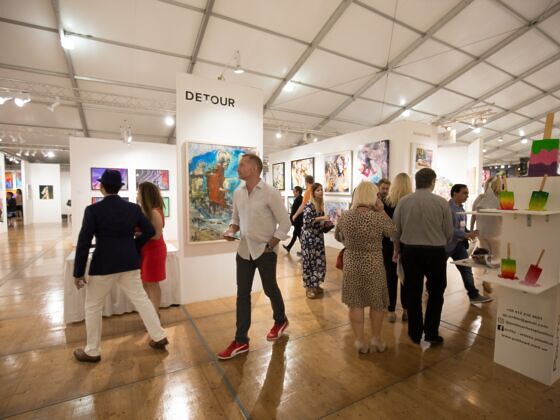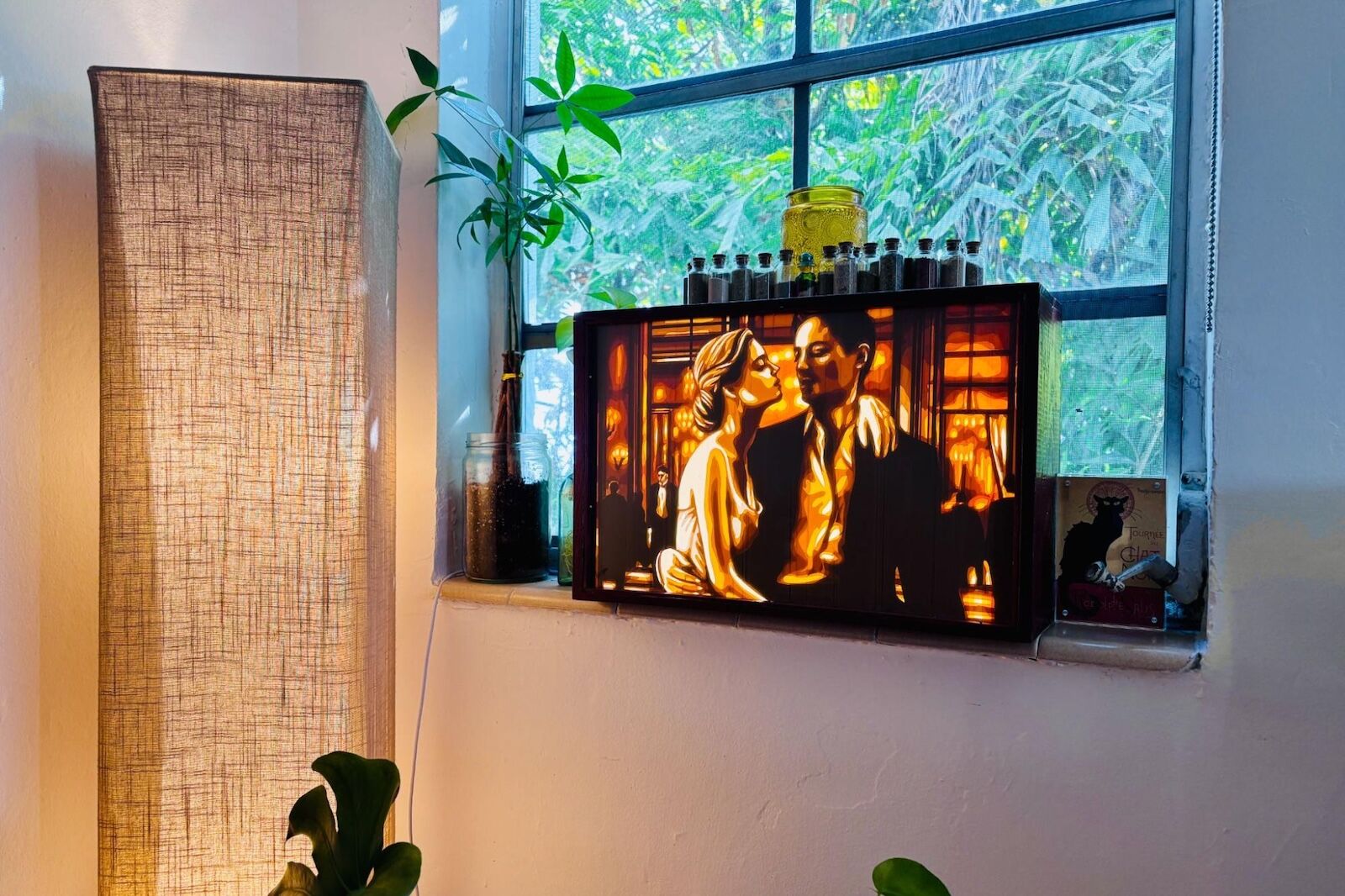Every year during the first full week of December, about 80,000 visitors flock to Art Basel Miami Beach to experience the famous art fair. Both residents and visitors alike look forward to this annual event, when jumbo tents are built seemingly overnight (flooring included!) on the sands of South Beach to house art collections for a mere handful of days, and the social circuit runs enough parties to make a 15-block Uber ride turn into an hour-long nightmare.


Art Basel Miami Beach Isn’t Really About Art: Secrets of An Art Basel Socialite
As a Miami local who’s been here for five years, I now have developed a sixth sense for when Art Basel is in the air. A sudden influx of well-groomed Europeans appear, followed by the artsy, eccentric crowd from metropolises like New York City. It becomes an eerie sight: art dealers anxiously glued to their phones, making their way through swarms of urban hipsters strolling the beach boardwalk as palm trees sway in the tropical breeze background. For just under a week, Miami Beach co-opts an alternative identity where people watching becomes a sport. That, ultimately, is the most captivating exhibit of this art fair.
@brutamerica This ATM at #ArtBaselMiamiBeach ranks the account balance of each person who uses it. #mschf #artbasel #art #arttok #fyp ♬ original sound – Brut.
There’s a whimsical nature to Art Basel that never ceases to amaze me. Despite the myriad of pieces unaffordable to the masses, the vast majority of this yearly occasion has nothing to do with art. Yes, there’s a sudden surge of local art galleries to visit, and there are always a few pieces that go viral on social media, like 2022’s ATM bank account leaderboard, but most of the hype revolves around the hoopla for the event itself. Memes begin to circulate leading up to the event, often revealing the disconnect between its showcased art and its visitors — many who attend don’t even know how to pronounce “Basel” correctly, named after the event’s Swiss city of origin.
Social hot spots like Soho Beach House also build their own private tents on the beach, only for members of the club (and their plus ones) to enter. Despite Soho’s tent going up like clockwork each year purely for Art Basel, there is no art to be seen inside. Instead, what’s on display is a multitude of bars offering curated cocktails (presumably backed by liquor sponsors). A few years back, a Porsche was conveniently parked on the sand right by the tent, for guests to take selfies with.
Luxury hotels all give it their own spin. Last year, I attended an RSVP-only art viewing at 1 Hotel and spotted a B-list Bravo reality TV star taking selfies with the art on display. I looked around in horror as I noticed it wasn’t just her. Others were also taking selfies with the art, as if this was a middle school trip to MoMA and not an exclusive event theoretically for high-end art buyers.
It finally dawned on me that the point of Art Basel is not to sell art, but to sell the idea of exclusivity. The fair strategically mentions its inaugural day each year is only for press and VIP: You’re either invited, or you need to pay up to show up.
Other than the main collections like Untitled Art, Scope and the Art Basel show at the Miami Beach Convention Center, which are accessible to the public for $30 to $100 a ticket and in walkable distance within the iconic South Beach neighborhood, a significant portion of parties and after parties are invite-only. This concocts a FOMO formula to Art Basel. Part of the allure is that you may just rub elbows with the elite who’s-who in town. You may accidentally photo bomb an influencer with millions of followers, or spot at least one family member of the Kardashian clan.

Photo: Art_Gants/Shutterstock
But how many visitors are actually buying art? According to The Art Basel and UBS Survey of Global Collecting, 58 percent of global art purchases in 2023 by “high net worth collectors” took place at an art fair, a decrease from 74 percent in 2022. This indicates that events like Art Basel absolutely have transactional power among the 1 percent, but what about the other 99 percent of attendees? It would seem they’re filling the pockets instead of sponsors who cash out on the occasion: liquor brands, luxury brands, and, of course, the Miami hotels that capitalize on the opportunity to strategically to fill up rooms between Thanksgiving and Christmas.
Art Basel as a phenomenon ends up ironically mimicking its own art. It isn’t hard to stroll through displays feeling the vast majority are filled with unimpressive, overhyped, and inconsequential pieces that could be crafted by a toddler with a blindfold on. But then there’s that 1 percent of art that stops you in your tracks. Last year, this happened to me when I spotted Max Zorn’s pieces at Scope. This Dutch artist got his start creating tape art (no paint involved) on Amsterdam street lamps in 2011.
Flash forward to over a decade later, and his work now adorns the homes of contemporary art lovers. He travels to Art Basel Miami Beach every year to feature his latest collection, which always ends up selling out to new fans and patrons he gathers. I was mesmerized by his glowing pieces, often made of empty wine crates and discarded cigar boxes. I inquired about pricing and discovered the piece I liked cost $1,600. I had never owned a piece of art worth more than $30 at your local mall’s Home Goods or Hobby Lobby before, but it’s not like $1,600 would empty my savings account either. I marveled at the fact that I was all of a sudden seriously considering buying a piece at an art show. Was I on my way to becoming one of those “high net worth collectors” Art Basel reported on? Was the K in my name a sign all along that I was meant to keep company with the Kardashians?
On the one hand, it seemed like a reckless personal purchase to make, especially for someone renting a one-bedroom apartment. On the other hand, I could vaguely hear the echo of a PBS Antiques Roadshow correspondent informing viewers that “art is an investment!” I was comforted by a vision of myself, 50 years from now, proudly showing it off to the grandkids: “he started as a street artist, just like Banksy!”

Photo: Keven Gungor
I ended up buying that piece, which warms up my living room every evening with its amber glow. As I’m writing this, Art Basel week in Miami has just begun again. A few days ago, I received emails from two separate artist reps (one of them from Max Zorn’s team), both asking if I needed a ticket to attend this year. My endorphins shot through the roof — had my one-time purchase secured life-long access to Art Basel high society? Little did they know that I had already bought my ticket. Despite the absurdity that Art Basel can be, it managed to convert me from skeptic to customer. Art Basel tried to sell me on the magnetic pull of FOMO, and it worked.